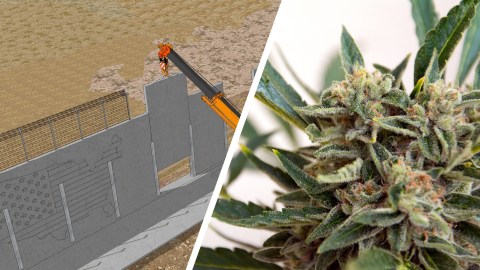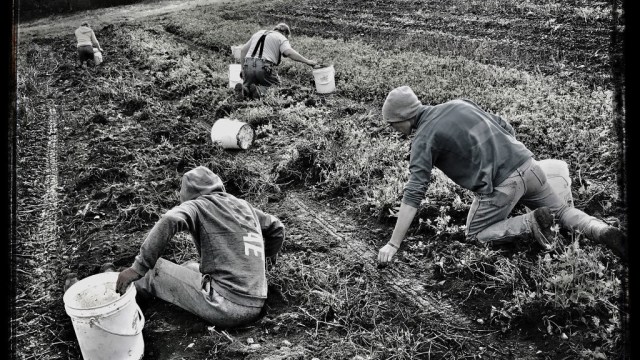The wall vs. legal marijuana: One is pointless, the other secures the border.

- The report uses recent government data to examine the effects that marijuana legalization has had on drug and human smuggling by Mexican cartels.
- Overall, it appears that marijuana legalization has led to decreases in not only marijuana smuggling, but also smuggling of all drugs across the border.
- The report suggests that the benefits of marijuana legalization might also serve as a model for how legalizing more immigration for workers might curb illegal border crossings.
How should the U.S. stop Mexican cartels from smuggling people and drugs across the border?
The answer isn’t to build a wall, but rather to legalize pot, hire more border agents at ports of entry, and open up channels of legal immigration for workers.
Those are the takeaways of a new report by David Bier at the Cato Institute. The report uses recent government data to analyze the effects that marijuana legalization has had on the rates of drug seizures at the U.S.-Mexico border, and it also draws parallels between marijuana and alcohol prohibition and current immigration laws.
Marijuana legalization and drug smuggling
What’s demonstrably effective at stopping the flow of drugs across the border?
Bier notes that, between 2003 and 2009, Border Patrol doubled its agents, constructed more than 600 miles of fencing, and introduced new surveillance technologies. But none of this seemed to have any considerable effect on the amount of marijuana and other drugs seized by border agents between ports of entry. This was, by the way, an era when as much as two-thirds of the marijuana Americans smoked came from Mexico.
Then, in 2014, Colorado and Washington moved to fully legalize marijuana, and more states began to follow. This legalization correlated with not only a decrease in marijuana seizures at the U.S.–Mexico border, but also a drop in seizures of all drugs.
(Data visual via infogram.com)
There’s no reliable data on the amount of illegal marijuana smuggled into the country annually. The next best thing is data showing the number of seizes at the border. From 2013 to 2018, the authors wrote, the amount of marijuana each Border Patrol agent seized declined by 78 percent.
“Marijuana smuggling has also not shifted toward entering through ports of entry,” they wrote. “Overall, all DHS agencies seized 56 percent less marijuana in 2017 than 2013.”
Cartels compensate by smuggling other drugs
Although Mexican marijuana smuggling has decreased in the past five years, it seems cartels are trying to make up those lost profits with other, more profitable drugs: cocaine, heroin, methamphetamine and fentanyl. These rises, which were measured in the value of drugs seized, only occurred at ports of entry where a border wall would have no effect.
(Data visual via infogram.com)
“In light of these facts, a surge of agents, technology, and infrastructure between ports of entry does not make sense as a strategy to control the flow of hard drugs into the United States.”
Reducing the incentives to cross illegally
The report makes an analogy between immigration laws and alcohol prohibition in the 1920s: You can make either illegal, but people are still going to take part, so the better option is measured legalization. In terms of immigration, the report notes that the number of work visas is negatively correlated with illegal entries along the border over the past 70 years.
“In other words, more work visas mean fewer illegal entries,” the authors wrote, adding that Congress could decrease illegal border crossings by issuing more permanent and temporary work visas, “thus reducing the incentive to cross illegally.”
(Data visual via infogram.com)
Bier suggests a border wall isn’t the best way to curb rates of human and drug smuggling.
“Instead, they indicate that a better approach to managing human and drug smuggling would be to hire more officers at ports of entry, increase legal channels for migration, and legalize marijuana nationwide. These alternative strategies have proved more effective than enforcement alone.”
Still, it’s worth noting that Bier doesn’t quite address how a border wall might curb rates of illegal crossings between ports of entry.
In a separate report, Bier argues that while a wall might discourage some crossing attempts, people would still be able to cross by climbing over a wall, digging under it, exploiting damages to it by natural forces, and even using ramps to drive over it.





